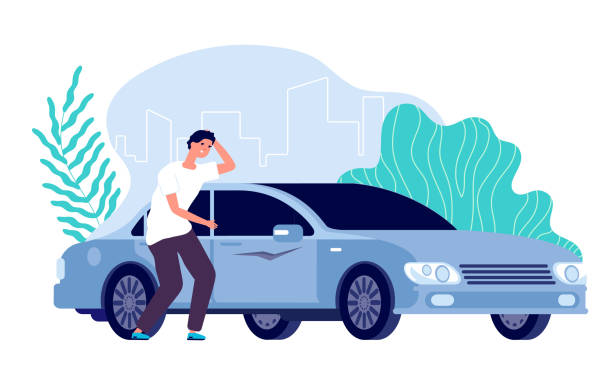Your journey is most important, however to make it more convenient it is important to do some preliminary checks before beginning your journey. Irrespective if it is a drive to the office and back or on a long journey. Make sure you check the next 10 before starting your car.
Before Entering the Car:
1- Walk around the car
This is to ensure there is no damage that has been made to the car in your absence.
2- Look for obstructions
This allows you to get a close up view of the proximity of any objects to the vehicle that you need to keep an eye out for when driving.
3- Check the tires
You should push against the tires and feel if any are going flat. Make sure all four tires are equally tough.
Before Starting the Car:
4- Adjust your seat into a comfortable position.
Make sure your feet can comfortably reach the pedals and that you can easily hold the steering wheel. Once you adjust the seat, ensure that it is locked in position (sometimes if it isn’t completely locked in – the seat can move a bit forwards or backwards).
You don’t want to contort your body into an awkward position to drive your car nor do you want to struggle to reach the accelerator or steering wheel. Both would make a horrid drive and may result in injured body parts.
Caution: Never adjust your seat while the car is in motion.
5- Adjust side and rear view mirrors while the car is on a straight road
Once your seat is in the perfect position for you, play with your mirrors to ensure you have the best view of your surroundings.
• The rear view mirror shouldn’t be either too high or too low, it should be just right with your ability to see about 10 meters behind you on a straight road.
• With the side mirrors – you should be able to see a portion of your car door as well as any cars behind you at an eye level.
You should adjust your mirrors while the car is on a straight road to gain the most accurate perspective. Otherwise, when you move onto a straight road, your view of the road and the extent your mirrors allow you to see will change.
6- Put on your seat belt
Buckle your seatbelt before you even start the car. If you are carrying any passengers, ensure they also have their seat belts on. Australian law purports that the driver is responsible for the safety and actions of all passengers.
After Starting the Car:
7- Check Your Dashboard
Your dashboard can make or break your car.
• You don’t want to drive with an empty tank or risk your car stalling in the middle of the road. Hence, the importance of seeing the amount of petrol you have and determining whether that is sufficient for your planned drive. (If you have difficulties, you can ask your supervisor).
• Most cars are in the cold range when they first start the car. It’s vital that you allow the engine time to warm up before moving. Depending on the weather conditions, this can be anywhere between two and five minutes (at least in NSW where temperatures seldom fall below 0’ Celsius). The temperature of your car should arrive at around the middle range: neither cold nor hot.
Caution: If the temperature is on either extreme (especially hot), there may be a problem with your car and you should get your car checked out by your car dealer’s service Centre or by your local mechanic ASAP.
8- Check Your Driving Tools
Every car is different so it’s crucial that you know the location of all of your driving tools.
• Indicators – it may seem like something insignificant but amidst the strain of driving in heavy traffic, you don’t want to turn on your windscreen wipers by accident and lose concentration.
• Windscreen wipers – again, something that may seem insignificant but you and I both know that Australian weather is unpredictable and you may be required to use your wipers at any point. So check out where your front and rear wiper controls are.
• Headlights, high beams and hazards – these are particularly important for night driving. Nevertheless, you should still test them out if you’re going to drive during the day – especially in cloudy weather or rain. Driving conditions are unpredictable so it is critical to know where your hazards are before you drive.
• Accelerator and break (for a manual car, you would also test the clutch) – if you’re a new driver or you haven’t driven for a while, it’s always good to return to the basics. So test out the positioning of your accelerator and break. After all, you never know when you’ll need them.
While some drivers may feel that checking your driving tools for location and functioning is an unnecessary step before they start driving, we believe that it’s better to be safe than sorry.
9- Adjust the air conditioner and windows
There have been many debates about whether it’s better to turn on your air con or wind down your windows with pros and cons on both sides of the debate. However, the choice between them isn’t the purpose of this article. Instead, it’s to remind all drivers to make these adjustments prior to driving.
This is a critical issue in the latest car models where air conditioning has not one, not two but THREE dials which can distract the driver if they are trying to turn on the air con while driving.







